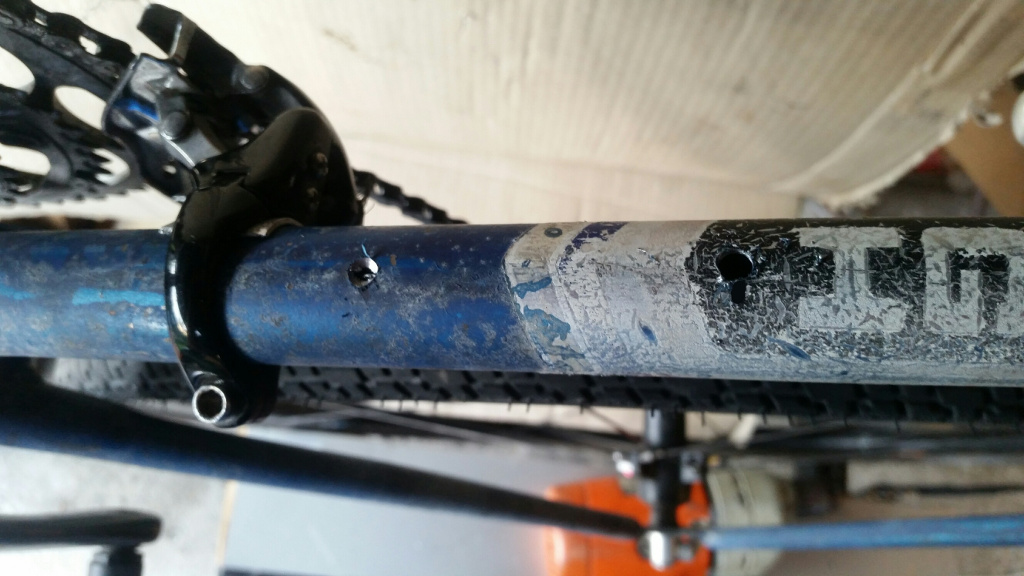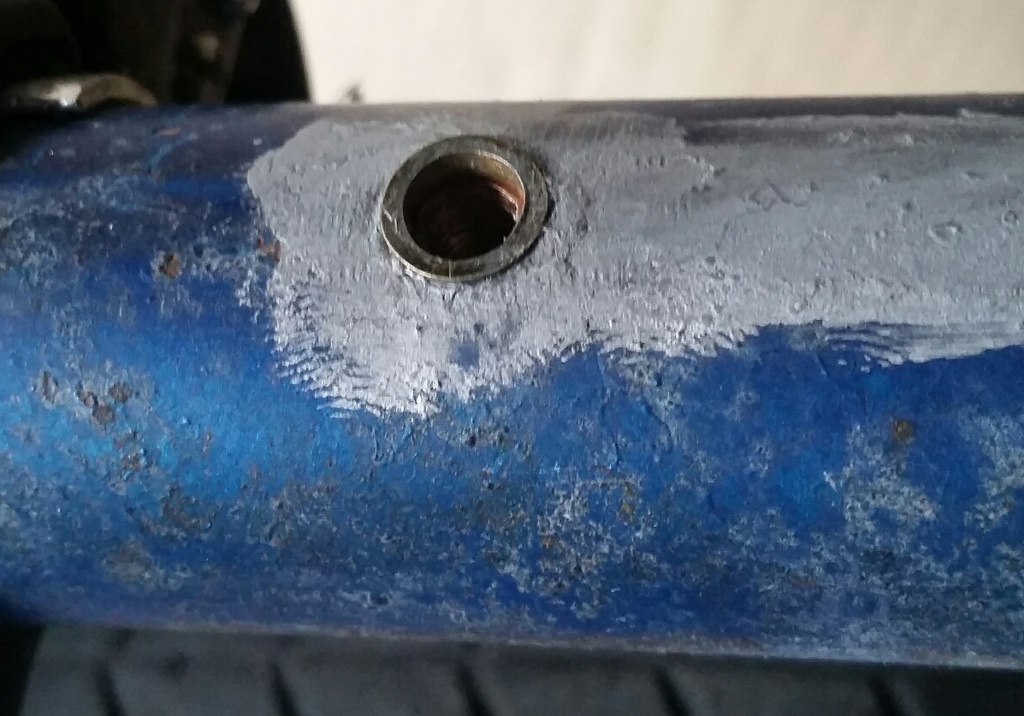Job completed - it worked well. Starting off with the finished product:

Start by measuring accurately. I put a bottle in each cage and then tested placements, considering the band-on clamp for the FD and the toolbag I have in the front of the frame triangle, which lead to a slightly high seat tube position, and a slightly low downtube bottle.

Then I used a self-powered punch to put a divot in the center of the tube. Be accurate!
Upper seattube hole is drilled, lower one is part drilled. I started with a 2mm bit, then stepped straight to a 5mm and finished with a 7mm. Probably better to go 2mm, 4mm, 6mm, 7mm. I tried to catch the swarf with grease, which was only moderately successful. I also tried a magnet, and a greasy paperclip in the hole to fish out swarf and chips. See painting comment. 
Close up of hole. The edges are slightly raised, and as Mikes pointed out its not a flat contact area. So (no pic) but I gently filed that lip off, and flattened the edges of the hole at the 12 and 6 oclock position to help the insert sit flatter. It worked well.

Here's the nutsert / rivnut / insert about to go in. Its got a light coating of clear epoxy on it, which may not have been needed.

When drilling, it was easy to drive a bit hard and clonk the drill bit into the far side of the tube. The tapered reamer didn't work for the same reason. So to protect the bare steel I sprayed some zinc-based paint on the edges, and into the hole to hit the far side.
Finished fitment. The paint's not great (okay its pretty awful) but the insert sits really close in and has no problem with M5 bolts.

Here's the top-side of the downtube before bolting on the cages.

Last comments
if you're going to buy the tool, don't buy a cheap one. Mine was $30 and the circlip failed on the last insert. leaving the tool's axle loose. Aim to spent at least double what the cheapest tool costs.
David points out that its possible to do this with a QR skewer - but I had to use a lot of force on the end of a 250mm arm. A 30-40mm Quick Release lever wouldn't be capable of this.
Drill the minimum-sized hole possible. Use vernier calipers to be sure. I ended up wiggling the drill bit fractionally to get a tight fit without stepping up to the next drill size.









